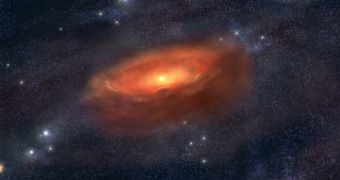Diamonds are often compared to stars and viceversa, sparkling with bright light. The explosion which created the whole observable universe produced matter composed of 99.9 percent hydrogen. Even today most of the matter present in the universe is still in the form of molecular hydrogen. Stars are made up of this widespread element, plus a small amount of helium and traces of other heavier elements which define the star's metalicity, while diamonds are made of carbon.
Stars however are somehow more like fiery furnaces, in which fusion reactions take place, to 'burn' or process the hydrogen by fusing it to produce heavier elements. For example, two hydrogen nuclei are fused together inside the star to create a helium atom and energy.
As the primary fuel source is depleting and the star approaches the final stage of its life, it will start to burn some of the helium, transforming part of it into some of the other heavy elements which will be ejected in space during the supernova phase, to join the interstellar medium.
One of the elements created by nuclear fusion is inevitably carbon. Researchers have found carbon in compounds throughout the interstellar dust, including diamonds, the most compressed form of carbon present on Earth. These can be found by analyzing the light of background stars, which is filtered through the interstellar dust and by making a spectral analysis.
All chemical elements have different spectral emissions. By comparing the light to the spectral emission specific to carbon, astronomers have found interstellar microdiamonds. Some can be found in meteoroids, named carbonaceous chondrites or diamond dust.
While many astronomical objects in the sky, such as dense clouds, exhibit spectral lines of 3.47 micrometers, specific to emissions of water ice bands, there are a few objects in the sky such as HD 97048 and Elias 1 which feature emissions in the 3,4 and 3,5 micrometers, associated with diamond dust.
Tracking these interstellar microdiamonds is somehow difficult since currently there is limited knowledge of their infrared and electronic properties.
For a diamond to emit a spectral fingerprint, considerable amounts of energy are necessary, since diamonds are tightly bound chemically, suggesting the presence of a very energetic star in the vicinity of the object. The presence of abundant neutral diamondoids in the interstellar medium can be detected if the absorption of light is present in the 3 micrometer region rather than emission.
So the diamonds in the sky can be found when they are excited by the glow of brilliant stars present in the near vicinity.

 14 DAY TRIAL //
14 DAY TRIAL //